|
The canopy latch is my own design. It can be opened from either inside or outside and has very
positive latching. (Click the small image for a larger version)
|

|
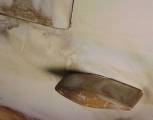 |
There is a torque tube under the seatback shear web. The torque tube extends out through the
fuselage side and has a tab welded on two sides. The tab is covered with foam and glass to make
an airfoil shape. |
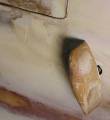 |
|
When the torque tube is rotated, it pulls or pushes the latches. The bracket holding the latch
in place is made from square tubing. The bolts do not pass through the longeron, they are
captured in the 5/8 inch piece of spruce that is glued to the bottom of the longeron.
|
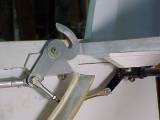 |
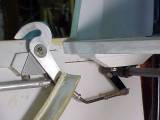 |
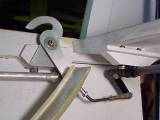 |
|
The latch is held in place with another bolt. This 3/16 inch bolt has a sleave around it that is
made from a short piece of 1/4" x 0.028 tubing. In this way, the bolt can be tightened onto the
sleave but still leave the latch free to rotate. I use this arrangement in a lot of places when
a part must rotate. When the plane is completed, the bolt heads will be covered with a some sort
of button so it will have a more finished look.
|
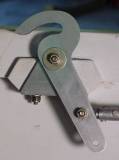 |
The front latchs will have a longer button attached to the bottom hole. When either of the
front latches are pushed forward, all four will rotate and unlatch the canopy.
Making all four latches identical is important. They were roughed out and the holes were drilled.
I made a jig to hold the four latches with a pin through the center hole. I used a router with
a 3/8" bit and cut the "gullet" on the jig. This ensured that the radius of the gullet of all
four is the same.
Bolt all four together and shape the outside so that they look identical
|
The top brackets were bent from 1/8" plate so that they would be aligned with the latches. The
attachment bolts pass through the canopy frame and the heads are buried in recessed holes.
The center bolt has a 1/4 inch x 0.028 sleave with a 3/8 inch x 0.058 piece over it. The outer
piece of tubing is slightly shorter than the inner one, so the outer will rotate like a bearing.
|
 |
back to the homepage
|







